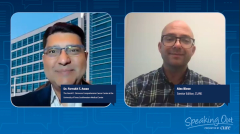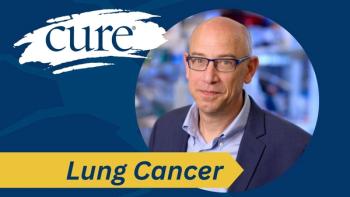
‘No Such Thing as a Good Cancer’: Explaining the Big CLL Misconception
One expert explained why chronic lymphocytic leukemia is erroneously considered a ‘good cancer.’
Chronic lymphocytic leukemia, or CLL, is, according to the American Cancer Society, one of the most common forms of leukemia, making up approximately a third of new cases of the disease in the United States and around 1% of all cancers in the country, the organization stated.
This year, the American Cancer Society estimated, there will be approximately 20,700 new cases of CLL diagnosed, and about 4,440 deaths from it in the United States.
And yet, there persists a misconception that CLL can be considered a “good cancer,” as Dr. Farrukh T. Awan, professor of internal medicine and director of the Lymphoid Malignancies Program at the Harold C. Simmons Comprehensive Cancer Center at the University of Texas Southwestern Medical Center in Dallas, explained.
“That's the biggest disservice we can do to our patients, to label CLL as a good cancer,” Awan told CURE® as part of the “Speaking Out” video series, speaking on behalf of the Leukemia Research Foundation. “Because honestly, there is no such thing as a good cancer.”
“Historically, the way that evolved that came about was that there is a group of patients with CLL that have certain genetic markers which basically make it a very slow-growing illness,” Awan noted. “And in those patients, sometimes they may die of old age before we have to intervene and fix the disease. And, as it happens, that's almost 30% to 40% of the patients.
“The other point is that a lot of times patients are diagnosed well in their 70s, and sometimes late 70s. And you know, even if they go 10, 15, 20 years for most patients, that's almost more than our average lifespan, at least in the U.S. [where] the average lifespan is around 79 to 81, in that ballpark. So, most of our patients would be able to live their normal lifespan even after they get diagnosed with CLL.”
As a result, such patients have been labeled over the years as having “good CLL,” Awan said. However, that isn’t the case for all patients who receive a diagnosis of CLL.
“There are multiple different types of CLL in which the time to treatment is also less than two or three years, sometimes within a year you have to treat them,” Awan said. “So a lot of times patients come to me after they've been diagnosed, and they would have been [told], ‘Hey, you have the good cancer or the good leukemia, you shouldn't worry about it’. And then it's very hard for me when I do that prognostic worker and find out that they have the high-risk markers which puts them into a more aggressive category, and would need treatment right away, which is obviously not what they had anticipated. And that's obviously another stressful aspect of their journey. So, it's a disservice that we say that CLL is a good cancer. CLL is a manageable cancer for a lot of patients, and in a lot of patients they may not need treatment.”
For more news on cancer updates, research and education, don’t forget to







